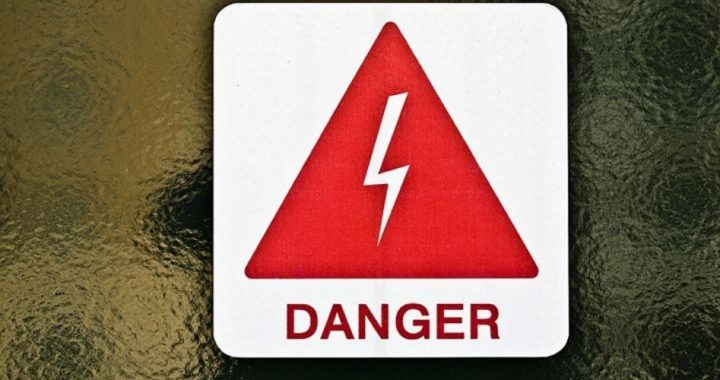
Health insurers are losing money rapidly as a result of ObamaCare, and with subsidies to soften the blow soon to expire, Americans buying coverage on the individual market can expect significantly higher premiums and possibly the long-expected “death spiral” absent major reform or repeal of the Affordable Care Act (ACA). Those are the conclusions of a new study from the Mercatus Center at George Mason University.
The report, authored by the center’s Brian Blase, the Galen Institute’s Doug Badger, the Heritage Foundation’s Edmund Haislmaier, and the University of Houston’s Seth Chandler, analyzed Department of Health and Human Services data on 174 insurers who in 2014 offered health plans to individuals and small groups both on and off the ObamaCare exchanges. (Exchange plans are also known as Qualified Health Plans, or QHPs.)
The study produced two key findings. First, despite huge subsidies, insurers still lost money on individual QHPs. Second, those losses were driven by the much higher claims incurred by individuals buying QHPs as compared to those enrolling in either group QHPs or individual non-QHPs.
Individual QHPs, according to the report, experienced loss ratios (medical claims divided by premium income) of 110 percent. In other words, each individual QHP, on average, paid out 10 percent more than the beneficiary paid in premiums. By contrast, group QHPs and individual non-QHPs had loss ratios of 82 percent and 83 percent, respectively, in line with historical averages for such plans.
The reason for the individual QHP losses, of course, is that ObamaCare encourages people who need coverage the most to enroll in it while discouraging those who need it the least. It prevents insurers from refusing to cover people with costly pre-existing conditions and from charging them premiums commensurate with their claims. For example, in both 2014 and 2015, about 50 percent more people over the age of 55 enrolled in QHPs than insurers expected. Those individuals, on average, cost insurers five times as much as younger persons, but the ACA only allows insurers to charge them three times as much in premiums. Meanwhile, the law’s numerous coverage mandates drive up the price of QHPs to the point that even with subsidies they are uneconomical for the young and healthy, who therefore choose to forego coverage. The subsidies, however, make them a bargain to those with serious conditions, so they enroll in droves. These factors are reflected in the claims costs of individual QHPs, which were about one-quarter higher than those of nearly identical group QHPs and almost double that of individual non-QHPs, the study said.
Why are group QHPs performing so much better than individual QHPs? Typically, group QHPs are offered through employers, and enrollment is limited to a brief annual period. Individuals tend to enroll in these plans as a matter of course rather than a matter of immediate necessity. Thus, many healthy people who will end up using little healthcare over the next year enroll, and their premiums can be used to offset the costs incurred by the relatively small number of enrollees with high claims. The ACA’s mandates and subsidies, on the other hand, make individual QHPs attractive to those who are already ill, and the numerous special enrollment periods and exemptions the Obama administration has granted over the last few years have made it possible for people to wait until they need insurance before buying it. This increases the likelihood of adverse selection and, ultimately, a death spiral. Indeed, as Blase pointed out in a Forbes blog, “Since insurers’ losses selling individual market QHPs more than doubled from 2014 to 2015, adverse selection appears to be worsening as implementation moves forward.”
Many of the ACA’s worst effects were masked during its early years by various programs designed to help insurers recoup their losses. Among those was the reinsurance program, which redistributed the profits of successful plans to those in the red. Insurers raked in $7 billion in reinsurance payments in 2014. A full 20 percent of individual QHP premium income that year came from reinsurance payments, which averaged $915 per enrollee. (The more successful group QHPs, on the other hand, had to fork over an average of $61 per enrollee to the reinsurance program.) In the absence of this program, the report’s authors calculate that insurers would have had to hike their individual QHP premiums by an average of 31 percent to break even.
With the program set to expire at the end of this year and adverse selection worsening, insurers are likely to seek steep rate increases next year in order to keep their QHP plans afloat. These “higher premiums,” the authors warn, “will further reduce the attractiveness of individual QHPs to younger and healthier enrollees, resulting in a market that will appeal primarily to lower-income individuals who receive large subsidies and to people with expensive health conditions.” Or, as Blase put it in his blog, “The individual market looks increasingly likely to morph into a highly subsidized high risk pool.”
This is clearly not the rosy picture of the exchanges that was painted by ACA advocates when they stumped for the law’s passage. The exchanges were supposed to be market-based and self-sustaining, not the “public option” by another name. Their existence, combined with subsidies and penalties, was supposed to induce more people to obtain health insurance, yet exchange enrollment continues to fall far short of needs, let alone expectations.
All of this was perfectly predictable, and indeed was predicted by ObamaCare critics, but they were brushed aside as mere partisans out to deprive Americans of healthcare. Nevertheless, the solution to these problems remains the same today as it did in 2010: Repeal ObamaCare and then start stripping away all the other unconstitutional interventions into healthcare that have made it so costly, bureaucratic, and sometimes downright dangerous.



